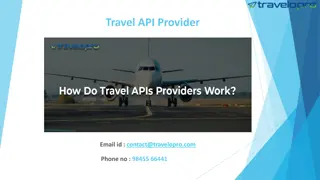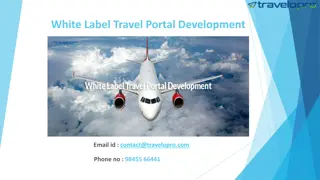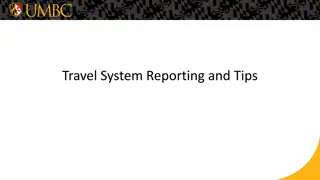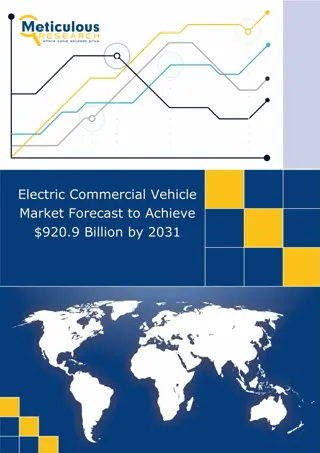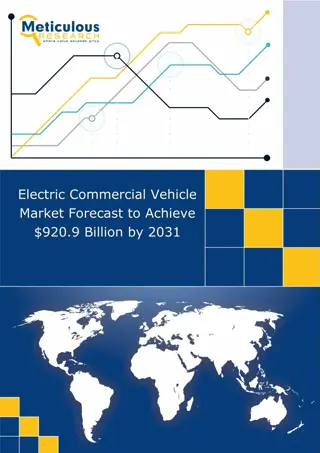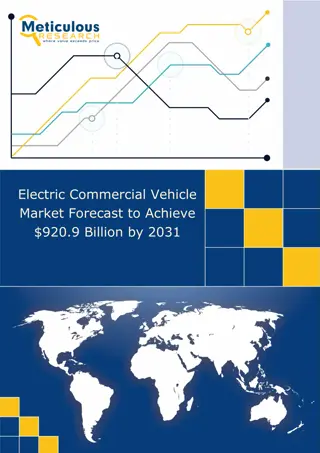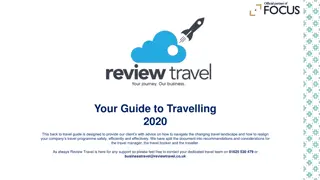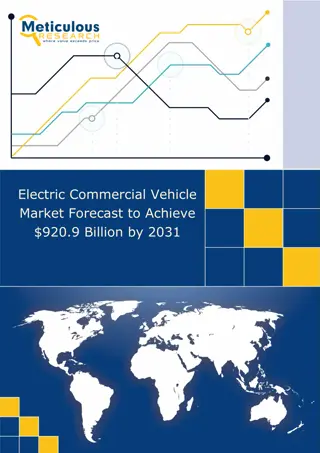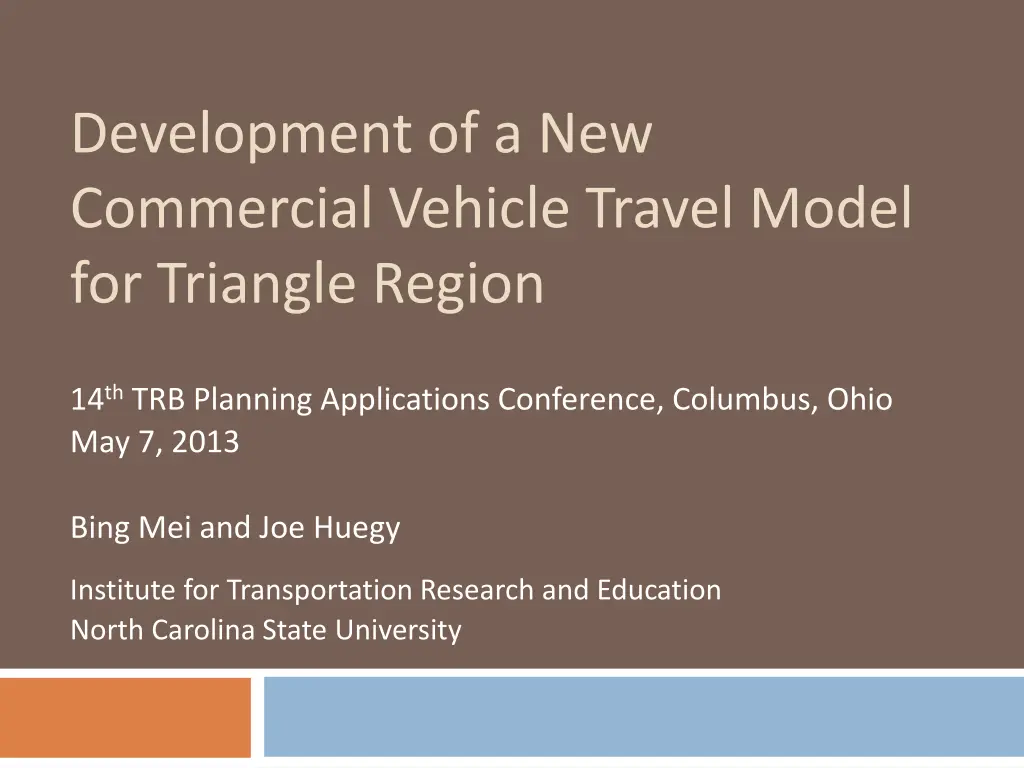
New Commercial Vehicle Travel Model in Triangle Region
"Explore the development of a new commercial vehicle travel model presented at the 14th TRB Planning Applications Conference. Learn about the survey data, trip generation models, and trip destination choice models in the Triangle Region, focusing on statistics and trip purposes."
Download Presentation

Please find below an Image/Link to download the presentation.
The content on the website is provided AS IS for your information and personal use only. It may not be sold, licensed, or shared on other websites without obtaining consent from the author. If you encounter any issues during the download, it is possible that the publisher has removed the file from their server.
You are allowed to download the files provided on this website for personal or commercial use, subject to the condition that they are used lawfully. All files are the property of their respective owners.
The content on the website is provided AS IS for your information and personal use only. It may not be sold, licensed, or shared on other websites without obtaining consent from the author.
E N D
Presentation Transcript
Development of a New Commercial Vehicle Travel Model for Triangle Region 14thTRB Planning Applications Conference, Columbus, Ohio May 7, 2013 Bing Mei and Joe Huegy Institute for Transportation Research and Education North Carolina State University
Outline 2010 commercial vehicle travel survey Trip data imputation Trip generation models Trip destination choice models
Triangle Region and Model Population: 1.6 million (2010) Employment: 0.85 million (2010) Area: 3,430 miles2 Trip-based model Traffic Analysis Zones: Internal: 2,579 / External: 99 Highway Network in Model: 7,400 miles
Survey Data 2010 Triangle Region commercial vehicle activity and travel survey Establishment-based survey 500 business establishments surveyed in the region Collected a rich set of data: Establishment data: SIC code, number of employees, number of commercial vehicles by type, locations, etc. Vehicle data: Vehicle type, number of axles, vehicle weight, beginning and ending odometer readings, etc. Activity/trip data: arrival and departure times at each activity location, activity location coordinates, trip purpose, goods delivered, weight of the goods, etc.
Survey Data (contd) Items Statistics # establishments that completed CV travel survey 486 # vehicles garaged at non-residence locations and operated by the establishments completing the survey 2,793 # vehicles surveyed 1,489 # vehicles that made trips on assigned survey day 863 # trips reported 5,669 # trips recorded in detail in travel diaries 4,557 Average vehicles per business establishment 5.75 Average daily trips per vehicle that completed the survey 3.81 Average daily trips per vehicle that made trips on assigned survey days 6.57
Survey Data (contd) Trip Purpose # of Trips Percentage Delivery of Goods Delivery of Services Pick up Goods Pick up Supplies for Services 1,416 1,596 217 52 31.1% 35.0% 4.8% 1.1% Serve People Deliver/Retrieve Mail Return Other Total 137 75 789 275 4,557 3.0% 1.6% 17.3% 6.0% 100%
Trip Data Imputation # of surveyed CVs making 10 or fewer trips (all recorded) 1,207 # of surveyed CVs making 11+ trips (11thand up unrecorded) 124 # of trips made in total 5,071 # of trips recorded 4,091 # of trips unrecorded 980 Note: statistics based on 436 internal business establishments Only first 10 trips recorded for each vehicle About 20% of trips unrecorded Affects time-of-day distribution substantially Mid-day PM peak
Trip Data Imputation (contd) Ad hoc imputation Simple random sampling from recorded trips made by the same vehicle Imputed trips join originally recorded trips for: Time-of-day analysis Trip generation model development Trip length frequency distribution for destination choice model calibration NOT for destination choice model estimation
Model Design Overall Model Design: Three vehicle types: light commercial vehicle (FHWA Classes 2 and 3) single-unit truck (Classes 5, 6 and 7), and multi-unit truck (Classes 8, 9, 10, 11, 12, and 13) Three trip purposes: delivery of goods delivery of services, and other purposes
Model Design (contd) FHWA Vehicle Classification
Model Design (contd) Few observations in survey data set for single-unit truck trips with other purposes multi-unit truck trips delivering services, and multi-unit truck trips with other purposes Models estimated (for I-I trips only): Vehicle Type + Trip Purpose Light Commercial Vehicle - Delivery of Goods Light Commercial Vehicle - Delivery of Services Light Commercial Vehicle Other Purposes Single-Unit Truck - Delivery of Goods Single-Unit Truck - Delivery of Services Multi-Unit Truck - Delivery of Goods Total Number of Trip Records 487 945 202 520 526 241 2,931
Trip Generation Model High correlation among explanatory variables Correlation Coefficient Industrial Industrial Retail H_Retail Office Service Household 1.00 0.84 0.82 0.81 0.74 0.77 Retail - 1.00 0.97 0.56 0.83 0.95 H_Retail - - 1.00 0.62 0.90 0.91 Office - - - 1.00 0.72 0.43 Service - - - - 1.00 0.76 Household - - - - - 1.00 Form new districts for regression based on zonal socioeconomic characteristics A two-hierarchy methodology 1st level: population vs. employment 2nd level: employment ranking by type
Trip Generation Model 1stlevel: Population dominating Population leading Balanced Employment leading Employment dominating 2nd level: S50-R30: 1st Service ~ [50%, 80%); 2nd Retail ~ [30%, 50%) O80-I05: 1st Office ~ [80%, 100%); 2nd Industrial ~ [5%, 10%) Combined: Population leading - S50-R30
Trip Generation Model Correlation Industrial Retail Office Service Household Industrial 1.00 -0.03 0.002 0.03 -0.10 Retail - 1.00 -0.07 0.05 0.23 Office - - 1.00 0.11 0.13 Service - - - 1.00 0.11 Household - - - - 1.00 Vehicle-Purpose Category # of Districts All purposes All vehicle types 130 Delivery of goods 103 Delivery of services Light-Duty CVs 113 Other 72 Delivery of goods 104 Single-Unit Trucks Delivery of services 99 Delivery of goods Multi-Unit Trucks 78
Trip Generation Model R-squared: 0.16 0.59 Explanatory variables with t score >= 1 retained
Destination Choice Model Explore the feasibility of developing a commercial vehicle trip distribution model with discrete choice model structure and stratified by both vehicle types and trip purposes Considering the complexity of commercial vehicle travel, test non-impedance variables for inclusion in utility function explicit inclusion of socio-economic, geographic, and political-boundary variables in the utility function coefficients on those variables estimated using formal statistical processes
DC Methodology Model Specification
DC Methodology (contd) Utility Function: inter-county dummies inter-area-type dummies inter-county dummies capture the strength of inter-county economic interactions inter-area-type dummies survey reveals larger commercial vehicles tended to travel between less developed areas
DC Methodology (contd) Model Estimation with Importance Sampling A sample of TAZs used for logit model estimation: Independence of Irrelevant Alternatives (IIA) Property Importance Sampling with Replacement (ISwR) method (Ben-Akiva and Lerman, 1985) Rationale of ISwR: The alternatives more likely to be chosen by decision maker have a higher probability of being selected into the sample Selection weight
Model Performance Evaluation Model performance evaluated based on: Average trip lengths; Trip length frequency distribution; and Coincidence ratios
Model Performance Evaluation (2) Trip Length Frequency Distribution by Vehicle Type and Trip Purpose for AM Peak Period
Model Performance Evaluation (3) Trip Length Frequency Distribution by Vehicle Type and Trip Purpose for PM Peak & Off-Peak
Model Performance Evaluation (4) Coincidence ratios: ?? = ?min(????,????) ?max(????,????)
Summary Forming districts based on zonal socioeconomic characteristics helps reduce correlation between independent variables for regression Travel time is still the strongest determining factor for destination choice Inter-area-type dummy variables are statistically significant in all SUT and MUT sub-models and push more SUT and MUT trips to less developed areas. Inter-county dummy variables are statistically significant in some sub-models too Room for improvement in the future: Explore the explicit inclusion of economic factors in the model to improve model s explanatory power; Investigate the use of more disaggregated employment categories that are more consistent with NAICS or SIC; Explore model stratification by NAICS or SIC sectors.
Thank You! Contact Info: Bing Mei, bmei@ncsu.edu, 919-513-7381 Joe Huegy, jbhuegy@ncsu.edu, 919-513-7378


